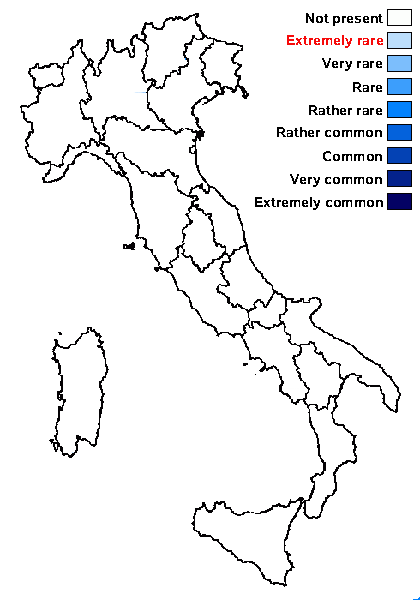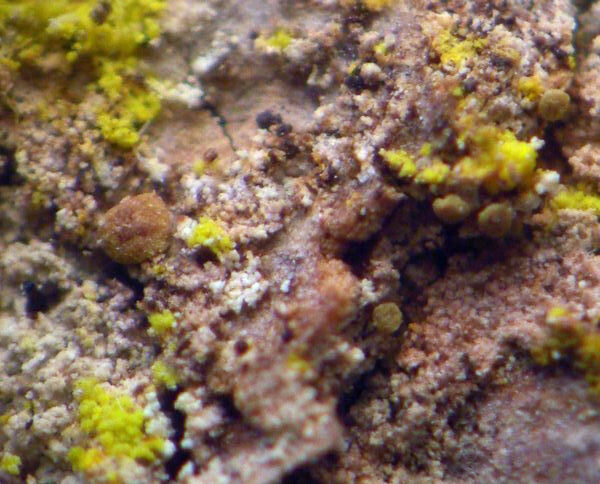Chrysothrix chrysophthalma (P. James) P. James & J.R. Laundon
in Laundon, Lichenologist, 13: 104, 1981. Basionym: Micarea chrysophthalma P. James - Lichenologist, 5: 131, 1971
Synonyms:
Distribution:
Description: Thallus crustose, endosubstratic, esorediate, ecorticate, effuse or rarely consisting of very small, grey warts, without a distinct prothallus. Apothecia numerous, biatorine, <0.2 mm across, with a flat to globose, rounded or somewhat tuberculate, yellow or orange, densely lemon-yellow-pruinose disc and a hardly visible, soon excluded proper margin. Proper exciple poorly developed; epithecium and hymenium densely interspersed with granules dissolving in K and later recrystallizing; hymenium colourless, 20-38(-45) µm high, I+ blue; pseudoparaphyses branched and anastomosing, intricately interwoven in a gelatinous matrix, the apical cells not swollen; hypothecium colourless, of densely interwoven hyphae. Asci 8-spored, clavate, the inner wall extending to form a K/I+ blue papilla, 20-27 x 9-13 µm. Ascospores (0-)1-3-septate, hyaline, ellipsoid to shortly elongate, (8-)10-13(-15) x 2.7-3.5 µm. Photobiont chlorococcoid, the cells sparse and scattered, densely surrounded by hyphae. Spot tests: K-, C-, KC-, P-, UV+ orange. Chemistry: rhizocarpic acid, diffractaic acid.Note: a species hitherto known from Western Europe and Macaronesia, growing on dry bark of conifers, more rarely of old broad-leaved trees. To be looked for, especially in Tyrrhenian Italy.
Growth form: Crustose
Substrata: bark
Photobiont: green algae other than Trentepohlia
Reproductive strategy: mainly sexual
Most common in areas with a humid-warm climate (e.g. most of Tyrrenian Italy)

Predictive model
Growth form: Crustose
Substrata: bark
Photobiont: green algae other than Trentepohlia
Reproductive strategy: mainly sexual
Most common in areas with a humid-warm climate (e.g. most of Tyrrenian Italy)

Predictive model
 INDEX FUNGORUM
INDEX FUNGORUM
 GBIF
GBIF




